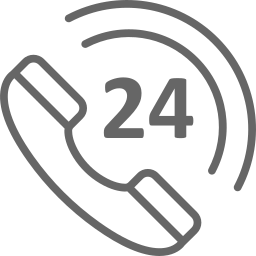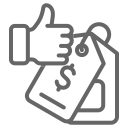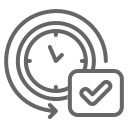The report highlighted the leadership challenge in the organization that has been resulted by COVID 19. COVID 19 has impacted the world resulting in business and financial loss. The organization has experienced uncertainty and anxiety throughout the workforce displaying several issues within the organization. The group as amalgamation of leadership personality using Triarichic theory of intelligence have explained that the participants are prone to distractions, hence interactive content is required for the organization. The COVID 19 pandemic has created a challenging environment with unknown displayed need for radical changes occurring in the work and social environment. The group individual leadership style has a direct impact on group performance. Establishing a safer work environment for employees and uncertainty due to pandemic has emerged as a key approach for the group. Analytical, creative, and practical intelligence had provided transition support to the employees for navigating the challenges posed by the pandemic. The report highlighted the group goals and action plan for establishing adjusted financial goals and employee wellbeing for considering a short incentive plan. Individual leadership quality is highlighted addressing business support adaptive, creative, and street as social intelligence to develop future actions for organizations to address business practice. The resolution included forming a team as practical actions for adapting to flexible arrangement. Defining a new business paradigm for the management to develop core capabilities to ensure employee transition additionally by creative opportunities developing podcasts to share employee experience. The group structure followed meetings to identify and develop solutions. Triarchic theory of intelligence contributes to developing potential solutions by identification of an analytical approach based on definite alternatives and practical intelligence by ascertaining employee feedback and real-life situation based on practical understanding.
Intelligence is defined as the ability to understand the personal and socio-cultural context. Organizational success can be achieved through managing a balance between adapting analytical, creative, and practical abilities (Howard 2001). The report will highlight the use of the Triarchic theory of intelligence and evaluate its effectiveness in mitigating the impact of COVID. The uncertainty surrounding the development of COVID 19 has amplified the workforce across the globe creating disruption in business operations and need for alternate work arrangements and employee wellbeing. The group in the organization comprises 5 people. S, T, U, V, and Y. The leadership characteristics are shown varied from participative intuitive to coordinating among group members. The communication between the groups showed divergent interest due to extraversion, introversion, and practical approach as shown by the group personality. The key gap show pandemic has resulted in a mental and psychological impact on the group.
Forming- The members identified to work as the group. S, T, U, V, and Y of my group. This has led to a discussion among the group on understanding on introduction and assessing personality of individual. The members were unfamiliar with each other and all 5 members identified their role and responsibilities to understand the situation. Two of the staff U and V ranked high on extroversion and displayed creative thinking and liked the social environment. Other employee S and T being inclined on anxiousness and very high on neuroticism. Employee behavior is central towards problem-solving in the group of five.
Additionally tuckman's s group development stages include forming, storming, norming, performing, and adjoining. Group development and individual employee learning are imperative to management performance while working in a group setting. The first meeting was a discussion on the pandemic outbreak.
The problems included -
In the second stage of group development storming, personality tends to clash and members felt uncertain about the choices they have made. As a leader, I recognized the conflict and found communication to mitigate them at an early stage. Sternberg ( 1990) identified street smart have a common sense based understanding of IQ as high practical intelligence. S and T were disciplined and wanted to work as an individual unit, whereas U had creative aspects and wanted to develop a social collaborative approach towards pandemic. Additionally optimum resource was allocated to develop solutions on their intellectual capability to assess the issue.
It was decided that all staff will function as a leader for addressing the issues. In the Norming stage, the staff feels motivated and is contributing as a cohesive unit on reassessing their goal for navigating the COVID crisis. In the second meeting, we took ourselves as leaders to develop perspectives on solving the issues highlighted in overcoming pandemic. The business goal identified and lack of motivation reflects poor performance. Moreover need for creative intelligence application in developing remote working through the new collaborative tool for employees to share the experience was identified. Using Triarchic theory strategic plan to modify business capability to expand new portfolio as opposed to the current market for mitigating business uncertainty will be undertaken.
In the next stage performing stage as employees work as a unit and in collaboration with one another, their conflicts have been addressed. The group character reflects as an external motivation for money and praise. Creative pursuit is on new experience desire between resource U and V. The group was made to understand the organization will function through feedback, communication will be improved through the analysis of the situation. Analyzing the group strengths as the group is multidimensional approach for comparing the data facts. Employees with strong creative strength will follow directions and develop new ideas for development and automation.
A new plan will be drawn to understanding COVID issues, weaknesses and doubts, and communicating the organization's vision to empower employees. Employee assessment will be provided by self-paced training for improving work style. The COVID 19 pandemic has created a challenging environment with the unknown to serve with radical changes occurring in the work and social environment (Korn Ferry 2020). The Triarchic theory of intelligence will act as an alternate for general intelligence for problem-solving (Sternberg, 1999).
Some of the approaches to challenges discussed were-
Based on the above suggestions as a leader, it is essential to facilitate top-down intervention balancing job demands and resources by physiological resources such as feedback support, therapy, and training for using well-crafted solution. Using Triarchic theory practical intelligence one needs to work effectively in an environment that is not learned. Using an internal resilience framework to adjust to growing to understand and creating support staff by using the empathetic approach for a pandemic. The democratic style enable employee s opinion to address COVID as black swan has shown a change in approach with long term impact. Moreover addressing concerns for the short term will help in moderating as the situation improves with the business working support after resuming operations. Developing creative intelligence and analytical reason for explaining difficult problems to others will optimize the benefit. U, S, T, V have developed an approach to employee welfare and operational profit. Time-bound plans for phase by phase implementation by taking caution as per uncertainty.COVID-19 uncertainty is a business risk on discontinuing office expenses and changing the business role to a multi-direction motivating team through reward structure for performance. This will improve employee productivity and improving employee job satisfaction. Creating a support network will encourage employee performance. Uncertainty produces anxiety throughout the workforce. Employees have explained that the participants are prone to distractions, hence interactive content is required for the organization. The analytical source is through the company website, published data for the impact of COVID in the country. The group members depicted intrinsic motivation to develop a creative solution based on better design and employee ell being for cultivating high performance and developing increased focus.
Establishing a safer work environment for customers and employees. Providing transition support to the employees. Establishing adjusted financial goals, considering a short incentive plan. Widening incentive plan layout structure was discussed. The group goal is to mitigate the impact of COVID on the organization for business continuity Personality clash was observed as a key measure between members and unequal participation pursued by developing analytical, creative, and practical intelligence. The action plan includes preparing a mindset. This will create an understanding of developing a communication strategy and assigning roles and responsibilities. Learning and training resource for employee wellbeing. This will emphasize a compassionate approach for understanding team concerns. The conflict between the group showed issues based on “ I know everything”, I am good at this”,
Developing solutions on the procedure for the balance of competence as COVID has emerged as a black swan. The behavior by S showed focused on his concept development. The diverse interest in the group can be classified as individuals based on analytical thinking and creative intelligence. Understanding team strength on departmental expertise to overcome business practice. This will enable task prioritization by acknowledging the work goals of the group. The key goals are working in mutual collaboration and contributing through their leadership style.
Post-crisis management for building on experience of visualization will be designed on smart working practice. Building accountability in the workforce will lead to higher performance and encouraging work routines for the team to maintain focus do not miss the deadline (Carnevale 2020)
In the adjourning stage, a transition plan will be drawn towards a sense of security and assurance to group members. It is necessary to generate new ideas and it will be determined by changing work priorities and transparency in the organization.
Monitoring and sharing the results for creating positive sentiment among organizations will be the final stage. This will foster leadership dialogue between the organization. Developing estimates for workplace design for modular change on the flexible arrangement for the discrepancy in tracking change. Developing workforce planning based on adjusting reward structure is necessary for employee work design on operations of the company (Korn Ferry 2020). This will help in motivating staff as support for employees as employee motivation. COVID 19 has kept on industry efficiency for staff to aligning objectives with financial performance. Understanding team, collaborative learning, and the environment in the fast-paced environment by Tuckman's model in the group deal with the emergence in the follow-up by developing social structure and reinforcing pattern (Largent 2016). The role of leadership is important as a leader is a gatekeeper in developing trust by monitoring to resolve the communication gap. The action plan will enable team development and understanding of developing a high-performance team.
From the above discussion and analysis, it can be concluded that successful intelligence broadly based on adaptive, creative, and street smart will develop future actions for an organization to address the business practice. Analytical intelligence is involved through flexible working and understanding and comparing it with an evaluated option for the group. Leaders using creative intelligence come up with the idea for navigating the COVID crisis. The COVID 19 pandemic has highlighted the key roles played by leadership in guiding stakeholders and understanding the evolving effects of the crisis. . Allowing compassion and allocating mentor to the employee for dedicated support showed individual autonomy to individuals working as the virtual teams. Contextual understanding as proposed in the Triarchic model of intelligence as awareness of real-life scenarios to help maintain a portion for managing the workforce (Howard 2001). In real life scenarios separating practical intelligent from general intelligence is very difficult. Triarchic theory of intelligence contributes to developing potential solutions by identification of analytical, creative, and practical thinking. Intelligence is broad and can occur in contexts by formulating a business approach for for benefit of the organization. Creativity through action plan incorporated will help leaders in navigating the COVID 19. Adapting and shaping intelligence in the selected environment by matching the needs for transformation and addressing the digital transformation will support the group functioning. Group functioning through democratic leadership address uncertainty and anxiousness on the operation, safety, and organizational profit.
Belhadjali, M., and Abbasi, S. 2020. COVID-19: The Role of Leadership in Response to Disruption. International Journal for Innovation Education and Research, 8(8), pp 362-365. DOI: https://doi.org/10.31686/ijier.vol8.iss8.2530
Carnevale, J.B., and Hatak, I. 2020. Employee adjustment and well-being in the era of COVID-19: Implications for human resource management. Journal of business research. 4(1). pp183-187
Sternberg, J.R. 1990. Metaphors of Mind: Conceptions of the Nature of Intelligence. United Kingdom: Cambridge University Press.
Howard, B.C., McGee, S., Shin, N., and Shia, R. 2001. The Triarchic theory of intelligence and computer-based inquiry learning. Educational Technology Research and Development 5(1), pp 49-69. DOI: https://doi.org/10.1007/BF02504947
International Labour Organization. (2020). Teleworking during the COVID-19 pandemic and beyo and a Practical guide.[Online]. Available at https://www.ilo.org/wcmsp5/groups/public/---ed_protect/---protrav/---travail/documents/publication/wcms_751232.pdf. [Accessed on October, 26th, 2020].
Korn Ferry. 2020. A leadership guide on coronavirus. [Online]. Available at https://www.kornferry.com/content/dam/kornferry/special-project-images/coronavirus/docs/KF_Leadership_Playbook_Global_FINAL.pdf. [Accessed on October, 26th, 2020].
Largent, D. 2016. Measuring and understanding team development by capturing self-assessed enthusiasm and skill levels. ACM Trans. Comput. Educ. 16 (2), pp 1-27. DOI:https://doi.org/10.1145/2791394
Sternberg, J.R. 1999. The theory of successful intelligence.3(4). Review of general psychology. 4(1), pp 292-316. DOI: https://doi.org/10.1037/1089-2680.3.4.292
Sternberg, J.R. 2018. Speculations on the Role of Successful Intelligence in solving Contemporary world problems. Journal of intelligence. 6(4), pp 1-20
Remember, at the center of any academic work, lies clarity and evidence. Should you need further assistance, do look up to our Management Assignment Help
Here are some related reads
Why are Management Studies and Assignments Crucial for Every Student
Your Surge for Digital Revolution Management Assignment Help Ends Here

Get 24x7 instant assistance whenever you need.

Get affordable prices for your every assignment.

Assure you to deliver the assignment before the deadline

Get Plagiarism and AI content free Assignment

Get direct communication with experts immediately.
Secure Your Assignments
Just $10
Pay the rest on delivery*

It's Time To Find The Right Expert to Prepare Your Assignment!
Do not let assignment submission deadlines stress you out. Explore our professional assignment writing services with competitive rates today!
Secure Your Assignment!